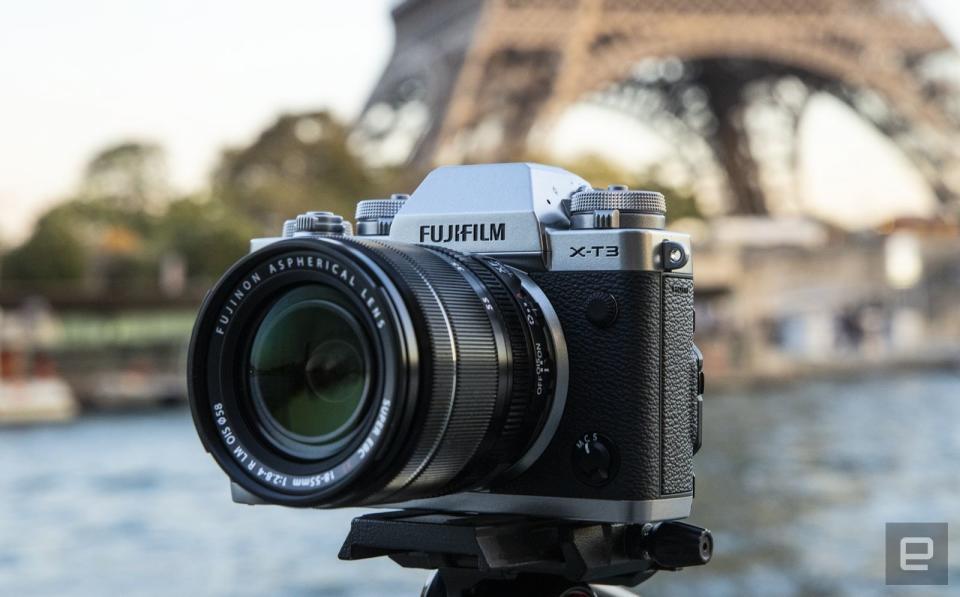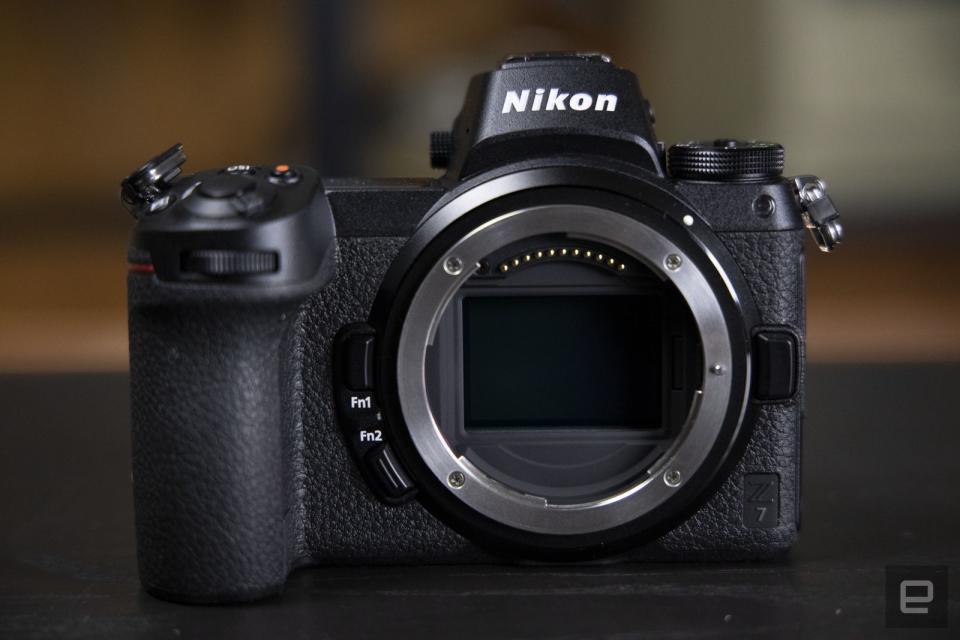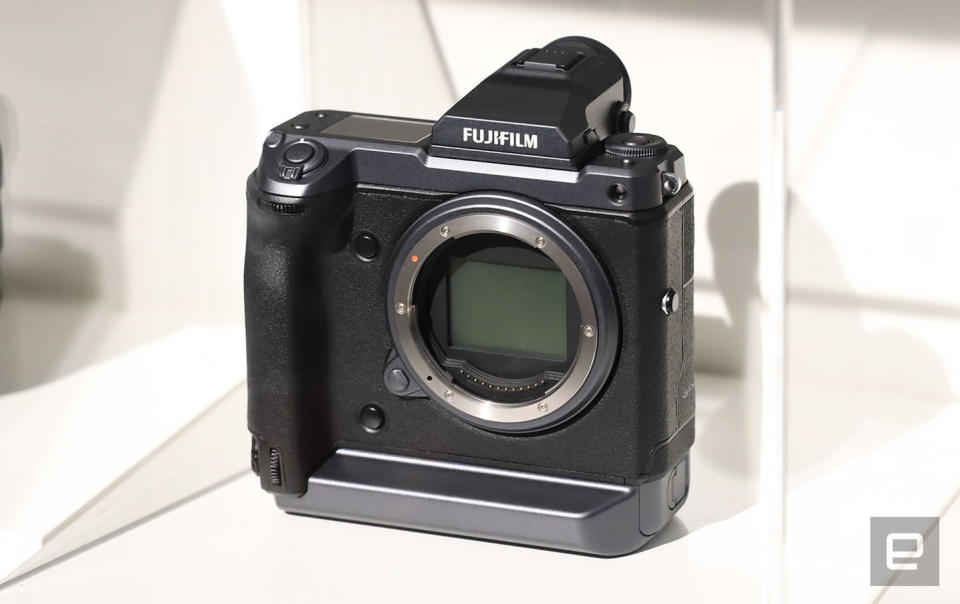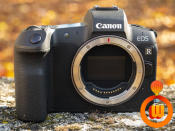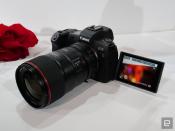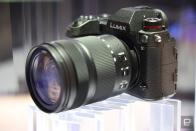2018 was the biggest shakeup in years for the camera world
Mirrorless cameras reached the tipping point.
If you're a photographer who fears change, 2018 might've shook you up. First Sony launched the A7 III, arguably the world's best full-frame camera, then Fujifilm released the X-T3, the top APS-C model you can buy right now. Right after that, Canon and Nikon launched all-new full-frame mirrorless systems with three new cameras, the EOS R, Z6 and Z7. To top it off, mirrorless video champ Panasonic announced it was diving into full-frame mirrorless as well with two new models, the S1 and S1R.
This is the biggest upheaval in the camera industry for years and could have a big impact on your buying decisions. On top of that, companies that don't adapt quickly may not survive, especially in a market gutted by ever more incredible smartphone cameras -- and moving fast will be a challenge for conservative companies like Canon and Nikon. Based on everything that happened in 2018, you can expect more drama and turmoil in 2019, but also even more innovative and interesting cameras.
Sony A7 III

In February, Sony launched the A7 III by saying it redefined what a "basic" camera was. While you might quibble that $2,000 isn't a basic price, Sony's claim was perhaps too modest. The A7 III set a new standard for mirrorless cameras by offering buyers incredible low-light performance, much-improved handling, fast shooting, excellent autofocus and the sharpest full-frame 4K video the company has ever offered.
Because of that model, along with the high-resolution A7R III and speed-oriented A9 introduced in 2017, Sony became the full-frame mirrorless camera leader in North America for the first time ever. It also started taking the professional market more seriously, toughening up the A7 bodies. Many high-end users, tired of seeing a lack of innovation with Nikon and Canon models, started seriously considering the switch.
That was bad news in a couple of ways for Sony's entrenched rivals. Though the pro market might not seem huge, camera bodies and lenses can cost tens of thousands of dollars and Canon and Nikon make big bucks servicing pro photographers. At the same time, consumers were shifting their buying dollars to mirrorless cameras instead of DSLRs, and neither company had much to offer.
The A7 III launched a lot of think-pieces like my own questioning whether Canon and Nikon could ever catch up, given Sony's A7 III bombshell. As it happened, both were preparing to launch their own crucial full-frame mirrorless cameras soon. Before that happened, however, Fujifilm proved that it was possible to beat Sony at its own game.
Fujifilm X-T3
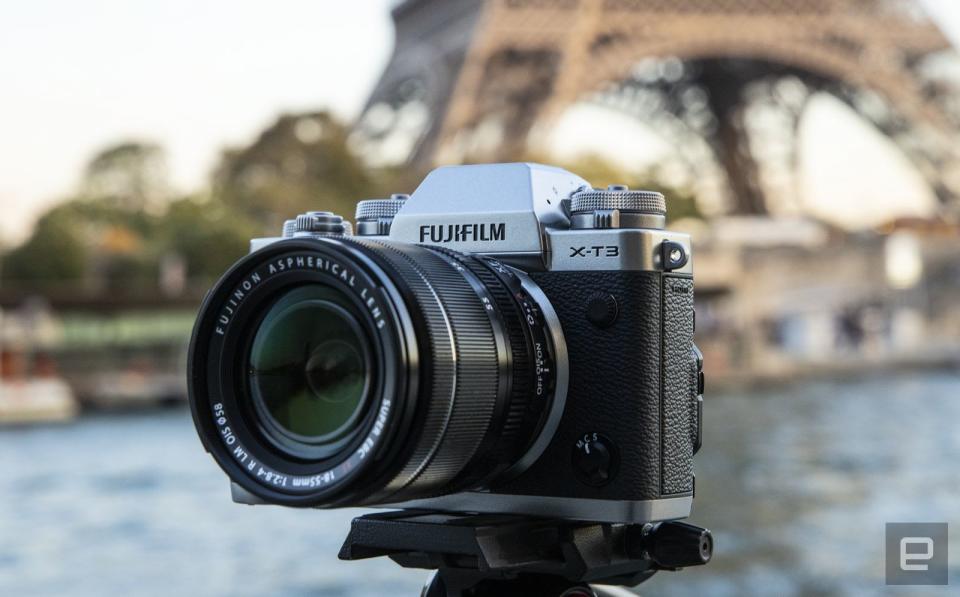
Sony not only dominates the full-frame mirrorless market, it also sells a lot of APS-C cameras. Fujifilm, already a strong rival, made that market more dynamic with the launch of the $1,500 X-T3. It has a higher-resolution sensor with much-improved autofocus that delivers stunning images. And surprisingly, the X-T3 is a video powerhouse, offering full DCI 4K video (4,096 x 2,160) with 10-bit internal video recording and pro-oriented microphone and headphone ports.
Sony's rival A6500 has a style that could best be described as "boring but functional." The X-T3, on the other hand, retains its predecessor's compact, handsome, retro form and plentiful physical dials. That gives it a tactile feel and makes it ideal for walking-around photography. On top of that, Fujifilm offers some of the sharpest lenses you can get at reasonable prices.
The X-T3 can also keep up with the A6500 by hitting 20 fps burst shooting speeds with the electronic shutter and up to 30 fps with a 1.25X "sports mode crop." Given that it's also better looking and has much better video capability, I found it to be the best APS-C mirrorless camera you can buy. Now, Sony has to respond with its next APS-C model, and I can't wait to see what it comes up with.
Canon EOS R

With so much riding on its first full-frame mirrorless camera, Canon's EOS R was a slightly disappointing start. The mount and lenses are excellent, but the camera itself has some issues. Chief among those is the lack of in-body stabilization, followed shortly by 4K video that's crippled by a 1.8X crop factor and unremarkable 60 fps 1080p slow-motion. It's also hampered by strange handling quirks and a single UHS-II card slot.
While the camera itself isn't perfect, it offers higher resolution images than comparably priced Sony and Nikon models. You also get a swivel screen and excellent Dual Pixel autofocus that make it ideal for vlogging. Finally, Canon offers three flavors of adapters, including one with a very useful neutral density filter, letting you use Canon's vast arsenal of EF-mount lenses.
During the EOS R's release party in Maui, I heard a lot of grousing among camera reviewers and vloggers about the problems with the EOS R. To its credit, Canon seemed to take those to heart, and promised me that its next models would address them. Given the foundation it has to build on, I'd expect Canon to come out swinging in 2019 -- and if it doesn't, Nikon is ready to swoop in.
Nikon Z6 and Z7

While Canon's EOS R is essentially a 5D Mark IV in mirrorless form, Nikon decided to pay homage to rival Sony. Given that company's mirrorless dominance, that seems a sound strategy -- why not give potential Sony buyers something else to think about? The 24.5-megapixel Z6 matches the A7 III pretty closely in terms of the price and specs, while the 45.7-megapixel Z7 follows the A7R III nearly feature for feature.
While Nikon aligned its Z-offerings with Sony, it tried to out-innovate its rival and play on its DSLR strengths. As such, I found that the Z6 and Z7 cameras handle better than Sony's A7 III and A7R III, thanks to the bigger grips, superior ergonomics and more capable touch screens. The Z6 has a better electronic viewfinder (EVF) than the A7 III, and both cameras offer 10-bit video output via the HDMI port, giving you more colors and dynamic range in post-production, and one-upping Sony's 8-bit output.
Both cameras have inferior autofocus for photos compared to Sony, however, and the same single card slot problem as Canon. The lens selection also isn't yet great, but Nikon will soon show us what it can do when it releases the 58mm Z-Noct lens in 2019 with an eye-opening f/0.95 aperture.
Overall, Nikon's first mirrorless cameras are a better start than Canon's EOS R, and close to what Sony has to offer. Sony will no doubt have an answer when it unveils its next-gen A7 cameras, including, hopefully, a video-centric A7S III model in 2019.
Panasonic Lumix S1 and S1R

Panasonic has always been very committed to the Micro Four Thirds format, so it was a bombshell when it announced that it, too, was going full frame. It not only unveiled two new cameras coming in the spring of 2019, the S1 and S1R, but also announced the all-new L-Mount alliance with partners Leica and Sigma.
Like Nikon, Panasonic based its full-frame mirrorless strategy around what Sony was doing with the A7. Much like the Z6 and A7 III, the S1 will pack a 24-megapixel sensor, while the 47-megapixel S1R slots into the same category as the A7R III and Z7. Both cameras will come with in-body stabilization, fully articulating displays and 4K video. Knowing Panasonic, you can probably expect the latter to very capable, given its excellent GH5 and GH5s models.
Rather than inventing an all-new system, Panasonic elected to license Sigma's L-Mount. That's a wise move, because unlike Nikon and Sony, Panasonic has no full-frame DSLR lenses it can adapt. Leica, on the other hand, does have (expensive) L-Mount lenses already, used on its own SL- and TL-mount cameras since 2014. Leica should benefit from the arrangement by selling more lenses and giving potential SL and TL camera buyers more options.
Panasonic will develop its own L-Mount lenses and release several with the S1 and S1R, likely in conjunction with Leica, as it has before. Sigma, which created the popular and very sharp Art lens series, will also manufacture its own lenses and bodies for the system. If Panasonic stays true to form, the S1 and S1R will be excellent hybrid cameras, forcing rivals to be more aggressive with video on their next models. It will be particularly interesting to see whether Canon and Sony are willing to offer 10-bit internal video that might cut into sales of their professional video cameras.
The best of the rest

While Panasonic has full-frame cameras incoming, it doesn't want you to forget about Micro Four Thirds. At CES 2018, it unveiled the Lumix GH5s, a video-centric version of the GH5 with a 10.2-megapixel sensor and no in-body stabilization. I've shot a lot with it over the last year (stay tuned for a long-term review), and it's the most capable hybrid camera on the market for video, I believe. Hopefully, a lot of that tech will appear in the new full-frame mirrorless models.
Also for videophiles, Blackmagic unveiled the Pocket Cinema Camera 4K (BMPCC 4K), which at $1,300, is far and away the cheapest 4K RAW camera on the market. Though it lacks in-body stabilization and continuous autofocus, the relatively low price makes it very desirable for serious filmmakers. It's also got a big, beautiful display, great handling and excellent dynamic range. The camera was a nice surprise that will push bigger rivals to do better.
Finally, Fujifilm launched a pair of medium-format cameras at Photokina 2018, the GFX-50R and GFX-100. The cameras pack 51.4- and 100-megapixel sensors, with $4,500 and over $10,000 price tags, respectively. These models, along with the X-H1 introduced in February, show that Fujifilm is focused strictly on APS-C for its consumer lineup and medium-format for the higher end -- so full-frame is not on the cards.
What's coming next
It's hard to see where Olympus fits into this new regime, especially since it specifically (and emphatically) said it was not going down the full-frame road. As it stands now, the company is doing fine, but it didn't announce any major products this year. Standing still doesn't seem to be an option at the moment, but Olympus should soon introduce a successor to its blazing fast OM-D EM-1 Mark II sometime this year.
In the summer, Sony told DP Review that it was well aware rivals were working on full-frame mirrorless cameras, and correctly predicted that those models would arrive soon. As such, it has had plenty of time to counter them with upcoming models. You can expect to see a successor to the flagship A6500 APS-C mirrorless camera arrive soon, and possibly a low-light, video-centric A7S III.
Rumor has it that Canon will release an EOS R model with up to 75 megapixels of resolution, possibly as a successor to the 50.6-megapixel 5Ds. You can also expect Canon to introduce another RF-mount mirrorless camera this year that should better the current model, according to what I've heard.
With the launch of the Z6 and Z7, Nikon may not unveil another Z-Mount camera in 2019. Instead, it will likely shift its focus to DSLRs, and release a successor to the D610, likely the D760, which will become its entry-level full-frame DSLR and likely pack 4K video. You can also expect to see the D6, Nikon's flagship DSLR for well-heeled professional photographers.
Wrap up

In a market rocked by change, camera buyers may thrive, but some companies might not. The low-end camera market has effectively ceased to exist and smartphones are starting to gut the mid-range. As such, manufacturers are running to the high end, where the most interesting cameras (and profits) are.
Sony is an example of how to handle change, and its innovative mirrorless products finally shook Nikon and Canon out of their doldrums. Their first full-frame mirrorless products represent a great start, and point the way to where the market is going next. Panasonic is also going that way and taking its video smarts with it.
While Full-frame is great, most of us don't have $1,500 or more to throw down on a camera, let alone the lenses. What I hope to see is the same level of innovation on more affordable mirrorless products that cost under $1,000. With multi-camera AI-powered smartphones starting to close the gap there, too, camera companies have got to bring some of the same capabilities. Here's hoping that 2019 is just as eventful as 2018, if not more so.



